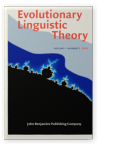Vol. 1:2 (2019) ► pp.162–174
The anatomical foundations of language dominance
A selective review of the available data
The evidence about asymmetries between the two hemispheres in human and non-human species may contribute to the current debate about language evolution. Here I present a selective review of the available data, limited to the macroscopic and microscopic anatomy of the main language areas. Both post-mortem and imaging studies confirm the presence of a leftward asymmetry in the Planum Temporale (PT) region in humans; in the case of Broca’s area the evidence is less consistent. The data about non-human primates also support the presence of a leftward asymmetry of the PT area in apes and monkeys. Studies on large populations, combining quantitative structural imaging of cortex and white matter, functional imaging measures during language tasks, and detailed assessments of handedness are needed to assess the relevance of comparative brain anatomy data to the investigation of language evolution.
Article outline
- 1.Introduction
- 2.Hemispheric asymmetries in humans: Planum Temporale
- 3.Broca’s area
- 4.White matter asymmetries and connectomics
- 5.Conclusions
-
References
